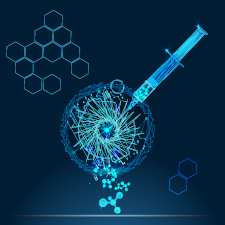Cancer is a disease that affects millions of individuals all over the world. Cancer can only be treated to extend survival time; there is no permanent treatment for cancer as of yet. As a result, cancer research to uncover the finest clinical methods for its cure is continuously ongoing.
The use of vaccine to treat cancer by stimulating the immune system has been announced by a group of scientists from the University of Texas Southwestern Medical Center in Dallas. They primarily wanted to introduce immunotherapy, which involves boosting the body’s immune system to combat foreign bodies such as cancer. T-cells are the most important immune cells to target and recognise cancer cells for elimination. This is where the vaccination comes in, as it contains antigens or live microorganisms that aid the body in recognising and targeting foreign bodies. Vaccines for cancer, on the other hand, can be costly and difficult, as well as create immune-related side effects.
The researchers created a nanovaccine utilising synthetic polymer nanoparticles and a combination of tumour antigens, keeping the vaccine principle in mind. Nanoparticles are currently being used by scientists because individual nanoatoms can deal with disorders within cells. These particles deliver antigen straight to lymph nodes, which aid in the production of T-cells. The vaccines function by delivering antigens to immune cells known as antigen-presenting cells, which aid in the recognition of the antigen by T-cells. Certain signals, in addition to the antigen immune response, can also trigger the immune response. Thus, the novel nanovaccine activates the innate immune system by triggering the adaptor protein “STING,” which helps deliver the antigen to particular cellular compartments within antigen-presenting cells.
Neck, head, melanoma, colorectal, cervix, and anogenital malignancies in mice models demonstrated sluggish growth and a long survival rate when treated with nanovaccines, according to the researchers. As a result, nanovaccines in combination with radiotherapy, conventional immunotherapy, and checkpoint inhibitors may soon create a new cancer treatment pathway.
The anti-tumor efficiency of nanovaccines will undoubtedly cause a stir in the healthcare business in the coming years.
